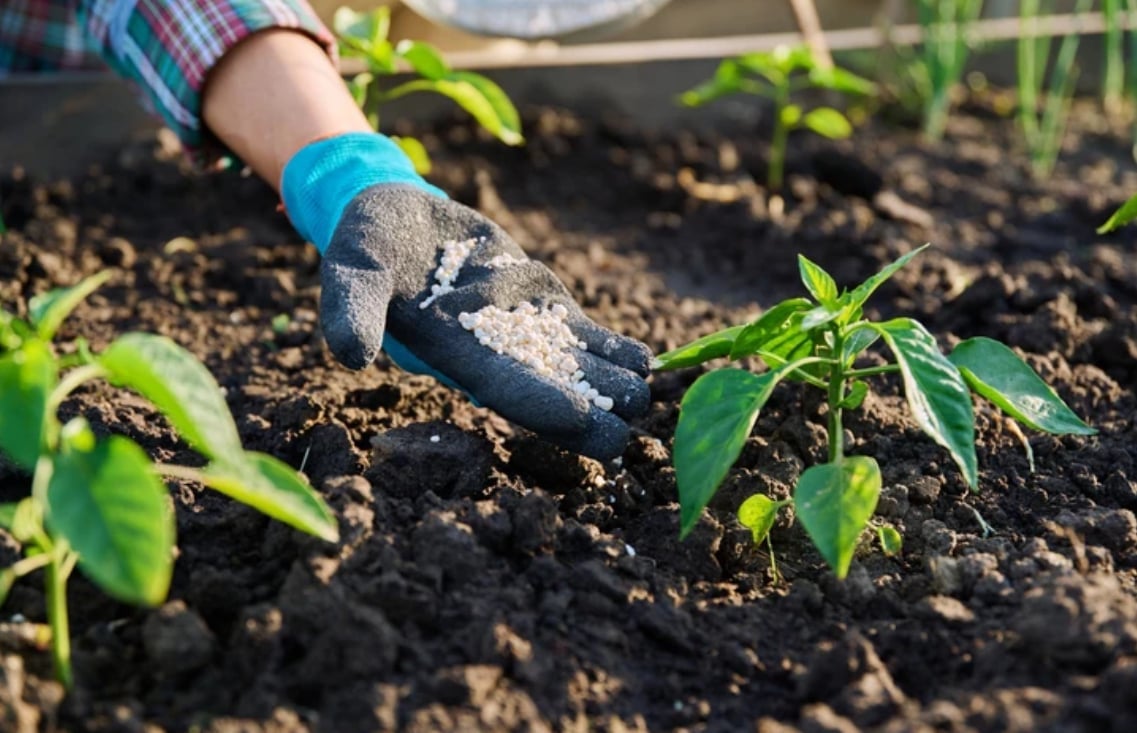October 30, 2025 | 10:07 GMT +7
October 30, 2025 | 10:07 GMT +7
Hotline: 0913.378.918
October 30, 2025 | 10:07 GMT +7
Hotline: 0913.378.918
Triple superphosphate (TSP) and diammonium phosphate (DAP) saw particularly sharp gains, rising 43 and 23 percent, respectively. The increase has been driven by strong demand, trade restrictions, and production shortfalls—especially in the case of urea.

Trade policies and sanctions are playing an increasingly significant role in reshaping global fertilizer markets. Photo: Shutterstock.com.
For the full year, prices are projected to register a modest increase over 2024, supported by firm demand, before stabilizing in 2026. However, prices are expected to remain well above their 2015–19 average, reflecting elevated input costs, resilient consumption, and ongoing export restrictions (China), sanctions (Belarus), and tariffs (Belarus and Russia). Risks to the outlook include input cost increases on the upside, and a potential easing if Chinese exports resume on the downside.
Some input costs have eased in recent months
Natural gas prices—a key input for nitrogen fertilizer production—have moderated, with prices in the United States and Europe down by 26 and 16 percent, respectively, since the start of the year. Ammonia prices have also declined significantly. In contrast, liquid sulphur prices have surged, tripling since the end of 2024.
Nitrogen supplies have been particularly affected by policy interventions, most notably China’s discretionary export restrictions. In 2024, China’s nitrogen fertilizer exports fell by more than 90 percent (y/y), as authorities prioritized stabilizing domestic prices and securing supplies for domestic agricultural production. These restrictions remained in place well into 2025. Phosphate exports have also been curbed to ensure availability for lithium iron phosphate batteries used in electric vehicles.
Meanwhile, Belarus—primarily a key potash exporter—continues to face trade restrictions imposed by the European Union. More recently, the EU introduced tariffs on remaining agricultural imports, including nitrogen-based fertilizers from both Russia and Belarus. These tariffs, to be phased in over three years, are designed to reduce the EU’s reliance on these suppliers and constrain Russia’s export revenues.
A recent surge in fertilizer prices—coupled with declining agricultural commodity prices—has made fertilizers less affordable for farmers. For instance, the affordability index for DAP (diammonium phosphate) has surpassed its early 2022 peak, while the indexes for urea and MOP (muriate of potash, or potassium chloride) have reversed their downward trends since the end of 2024.
Market conditions are expected to remain tight this year, particularly for urea, whose prices are forecast to increase 15 percent in 2025 before declining by 4 percent in 2026 as new capacity becomes operational in East Asia and the Middle East.
A modest recovery in European production may also occur, following disruptions triggered by the 2022 surge in natural gas prices and reduced gas flows from the Russian Federation. Key upside risks to the outlook include slower-than-expected capacity expansion, potential trade restrictions by major exporters, and higher-than-anticipated natural gas prices.
Over the longer term, the nitrogen fertilizer sector faces structural challenges due to its high carbon footprint, which could lead to shifts in production and consumption toward lower-emission alternatives. DAP prices are expected to increase 6 percent in 2025 before falling 8 percent in 2026, as new capacity comes online and supply pressures ease. The forecast assumes Russia’s exports will continue shifting from Europe to Brazil and India.
However, additional trade restrictions, supply interruptions, spikes in ammonia and natural gas prices could push DAP prices higher. MOP prices are projected to rise by about 5 percent in 2025, supported by firming demand, and stabilize in 2026. A key downside risk is a faster-than-expected expansion of Belarusian exports through alternative routes.
(WB)

(VAN) Show cause orders will be issued to retailers who sell imported rice at prices exceeding the maximum suggested retail price (MSRP) of P43 per kilo, Philippines Agriculture Secretary said in a statement on Thursday.

(VAN) Coffee prices on October 20, 2025, remained stable domestically, trading at 113,500–114,500 VND/kg. Similarly, global coffee prices also moved sideways.

(VAN) By October, Vietnam’s coffee exports had surpassed USD 7 billion for the first time and will exceed USD 8 billion within this year.

(VAN) Illinois rancher says Texas, Oklahoma, Kansas lost grass and forage, forcing massive cattle liquidation.

(VAN) Coffee prices on October 12, 2025, remained flat, trading at VND 113,000–VND 114,000/kg. This week, coffee prices continued to decline sharply.

(VAN) Coffee prices on October 9, 2025, have rebounded. Domestic coffee prices have risen by VND 1,000, trading at VND 114,000–VND 115,000/kg.

(VAN) Coffee prices on October 8, 2025, continue to decline. Domestic coffee prices have dropped by VND 1,000, trading at VND 113,000 - 114,000/kg.